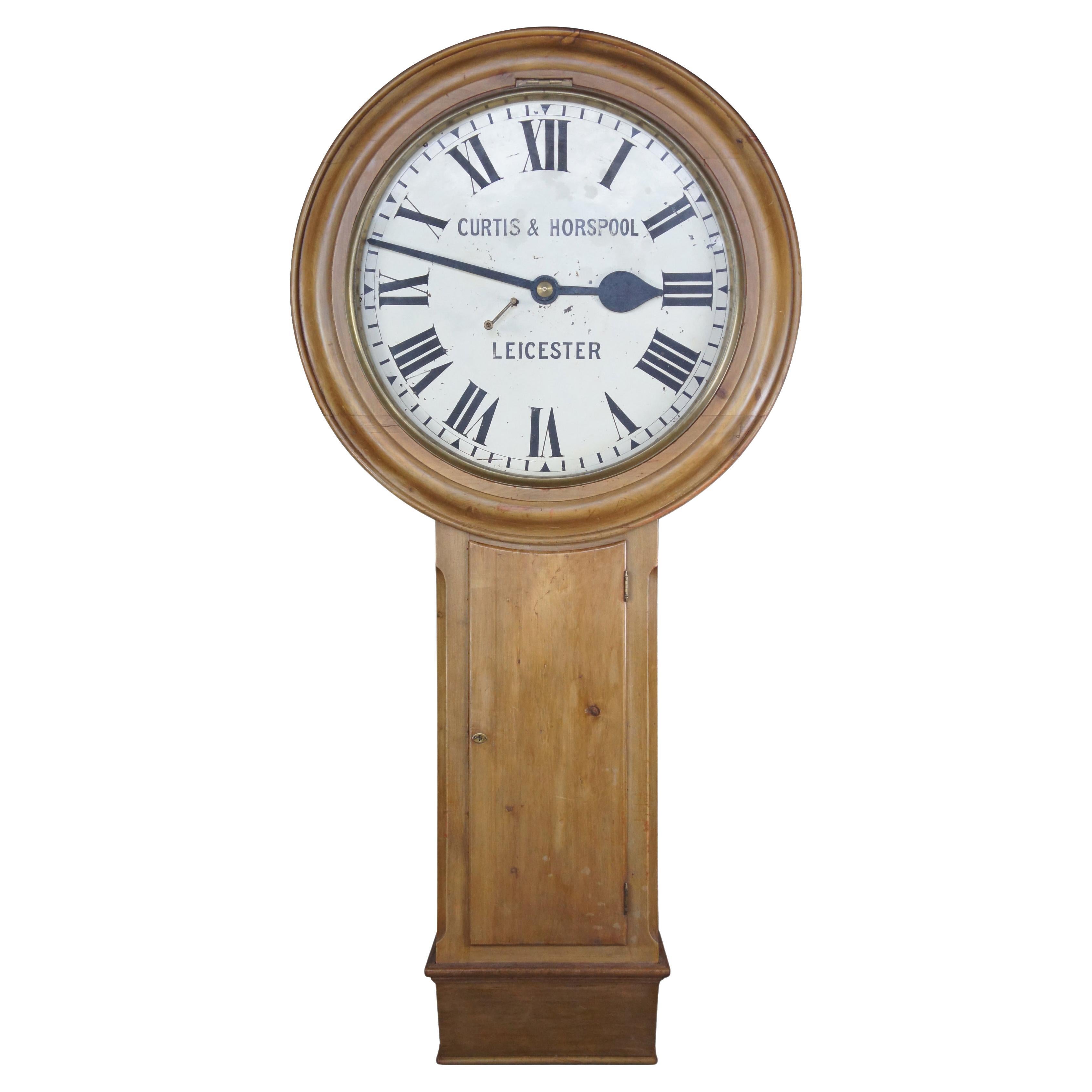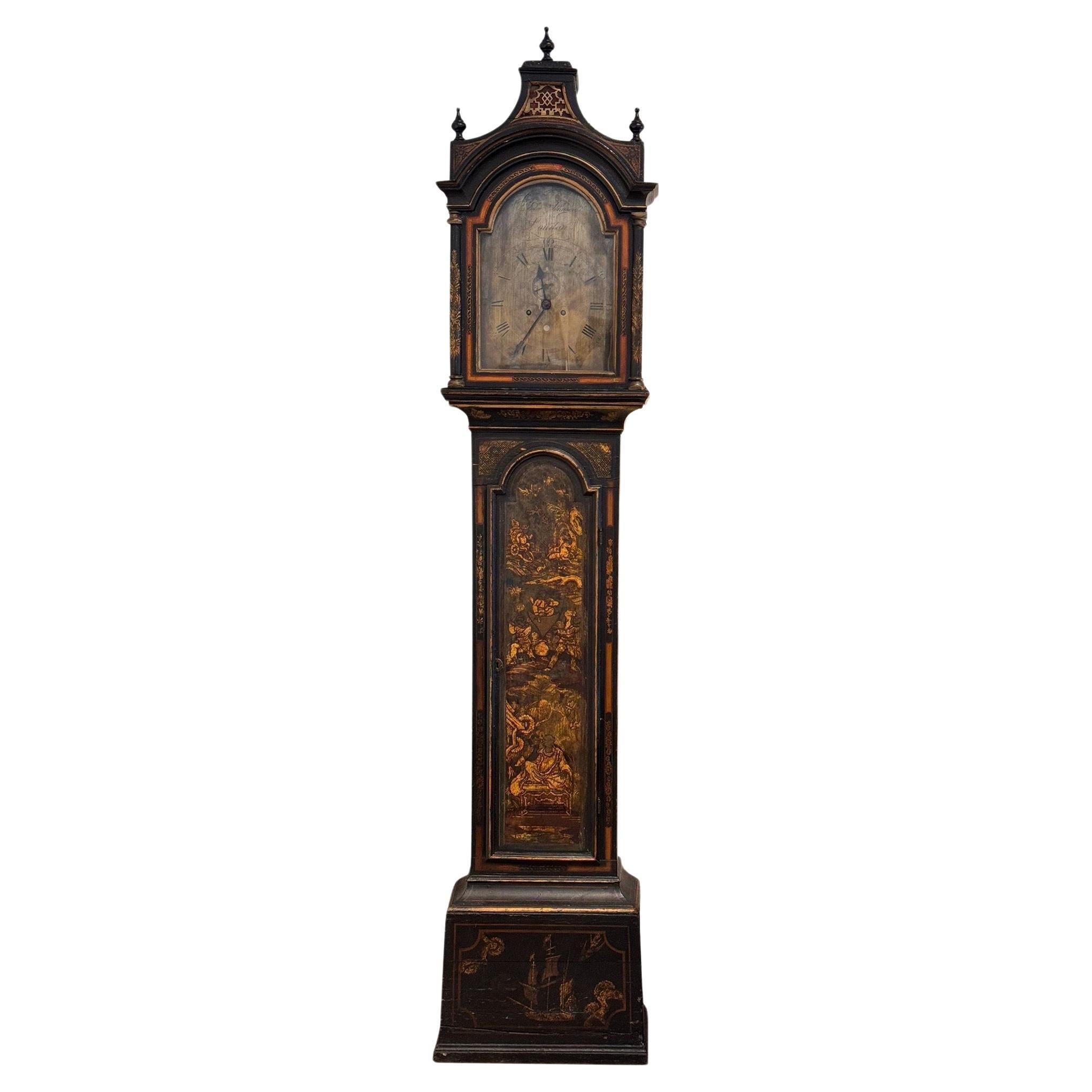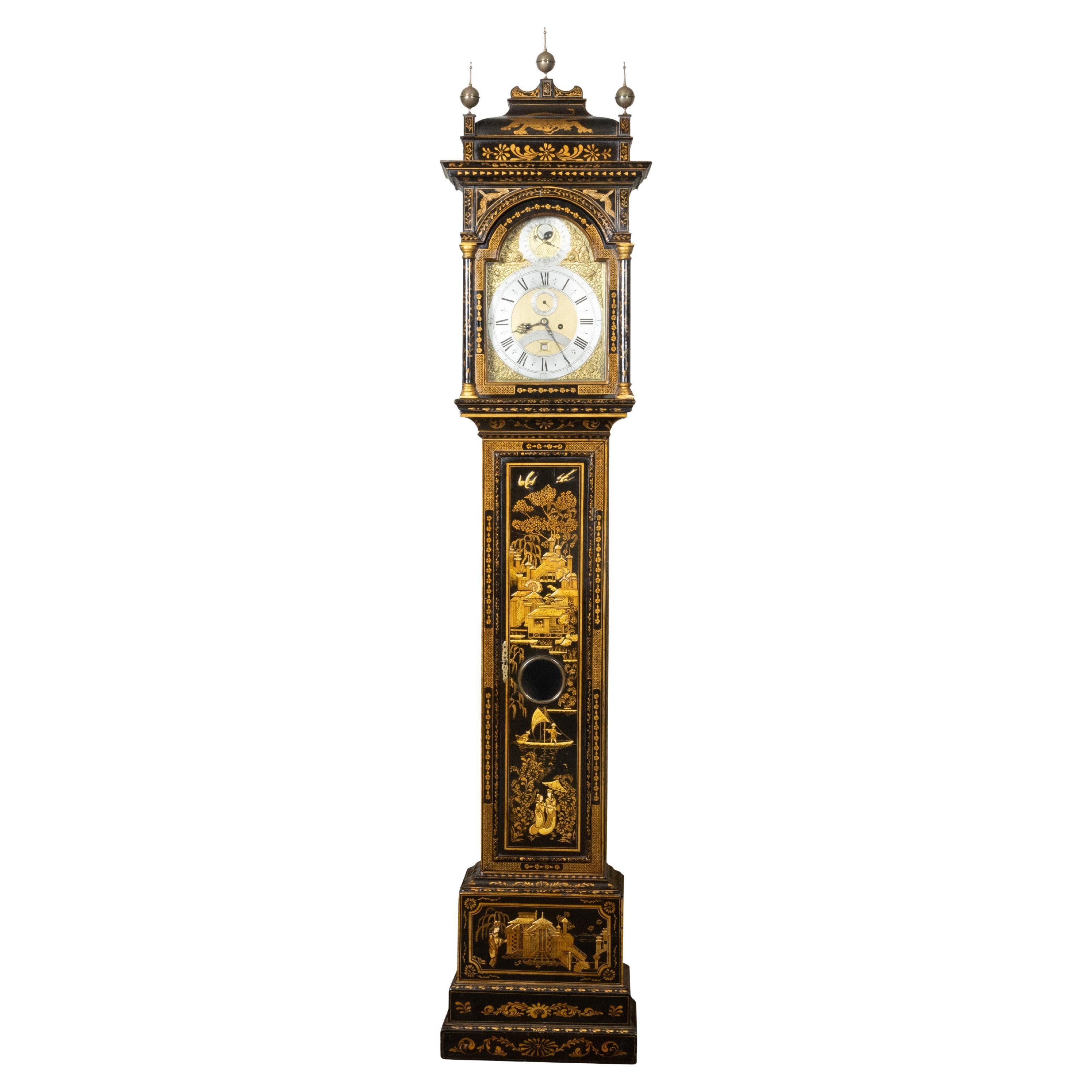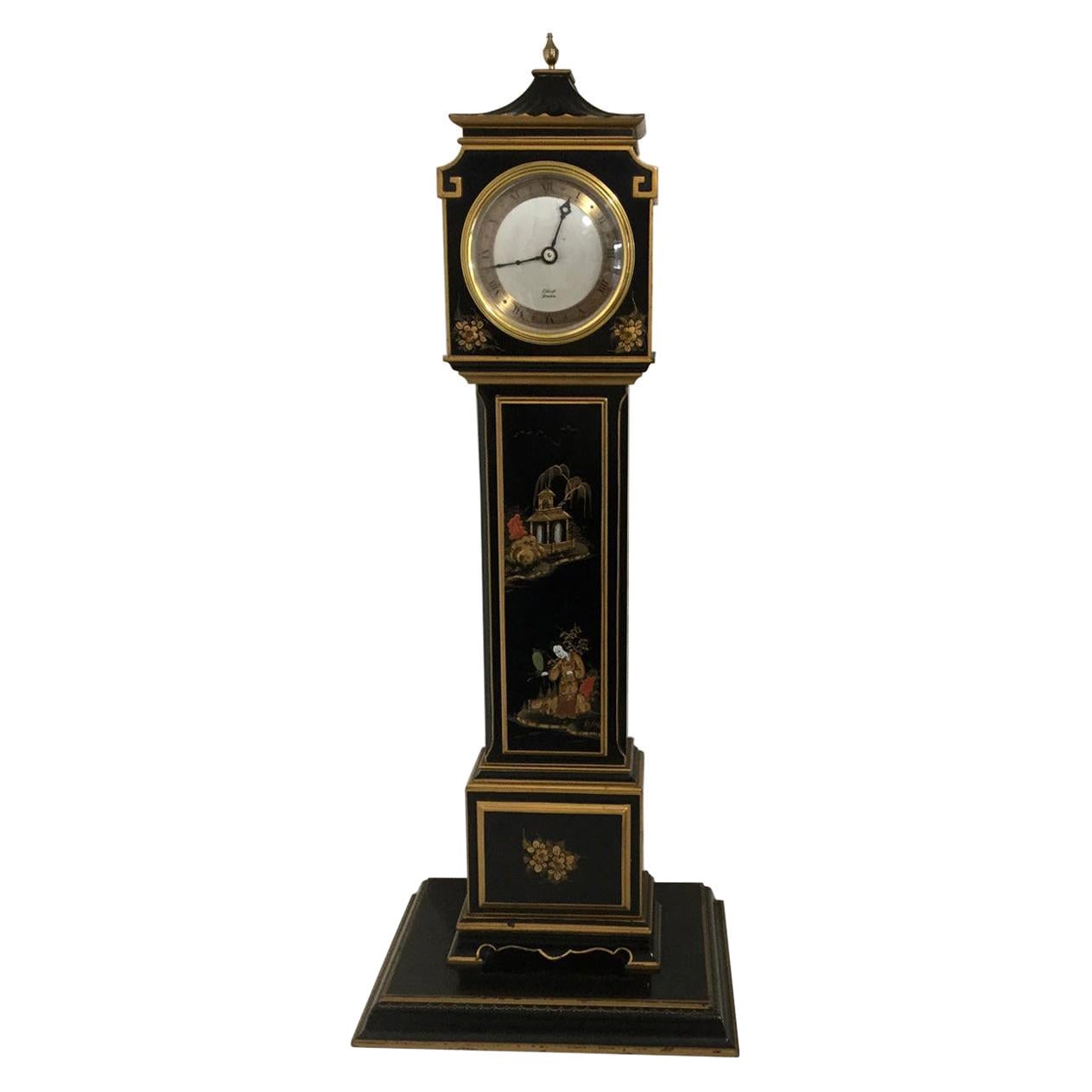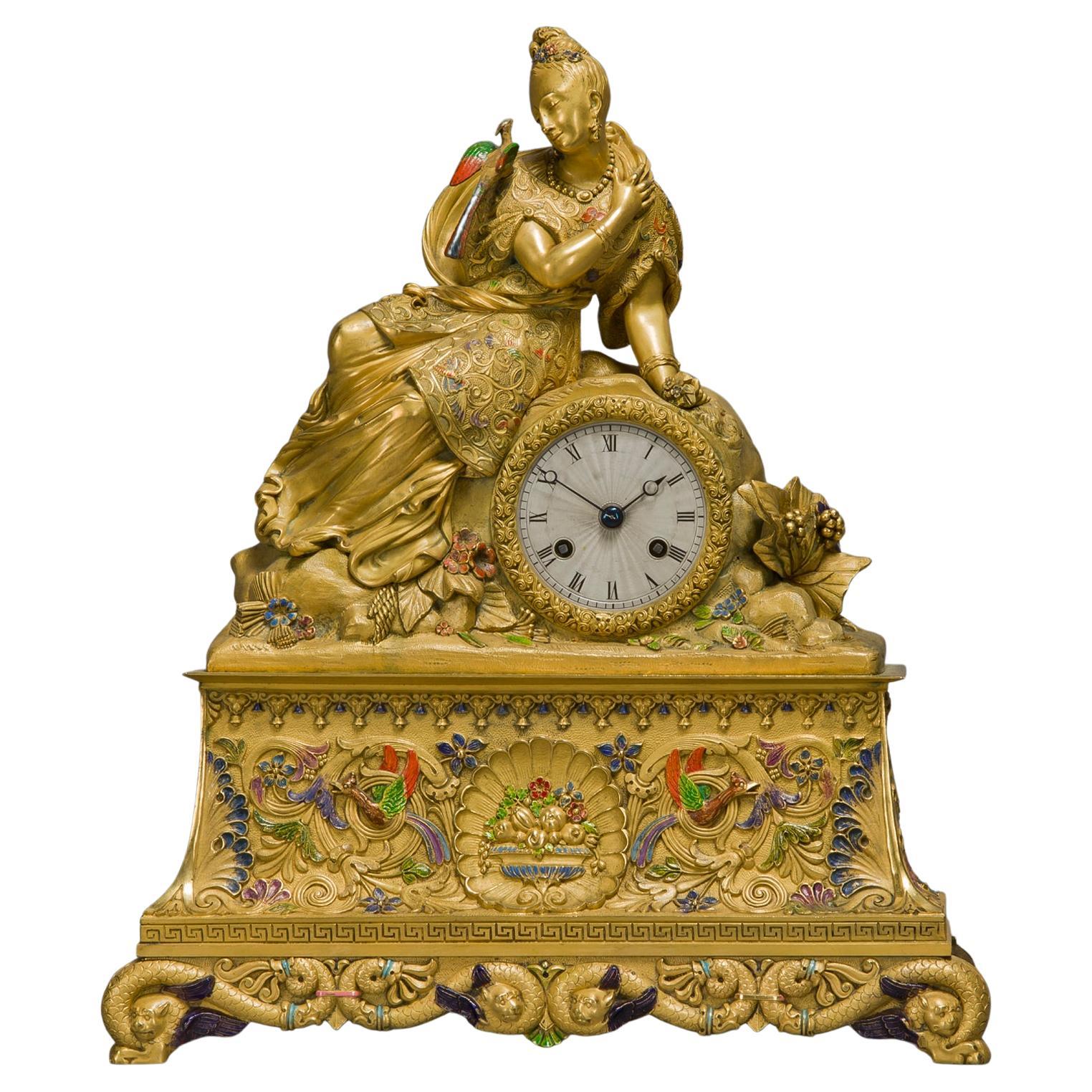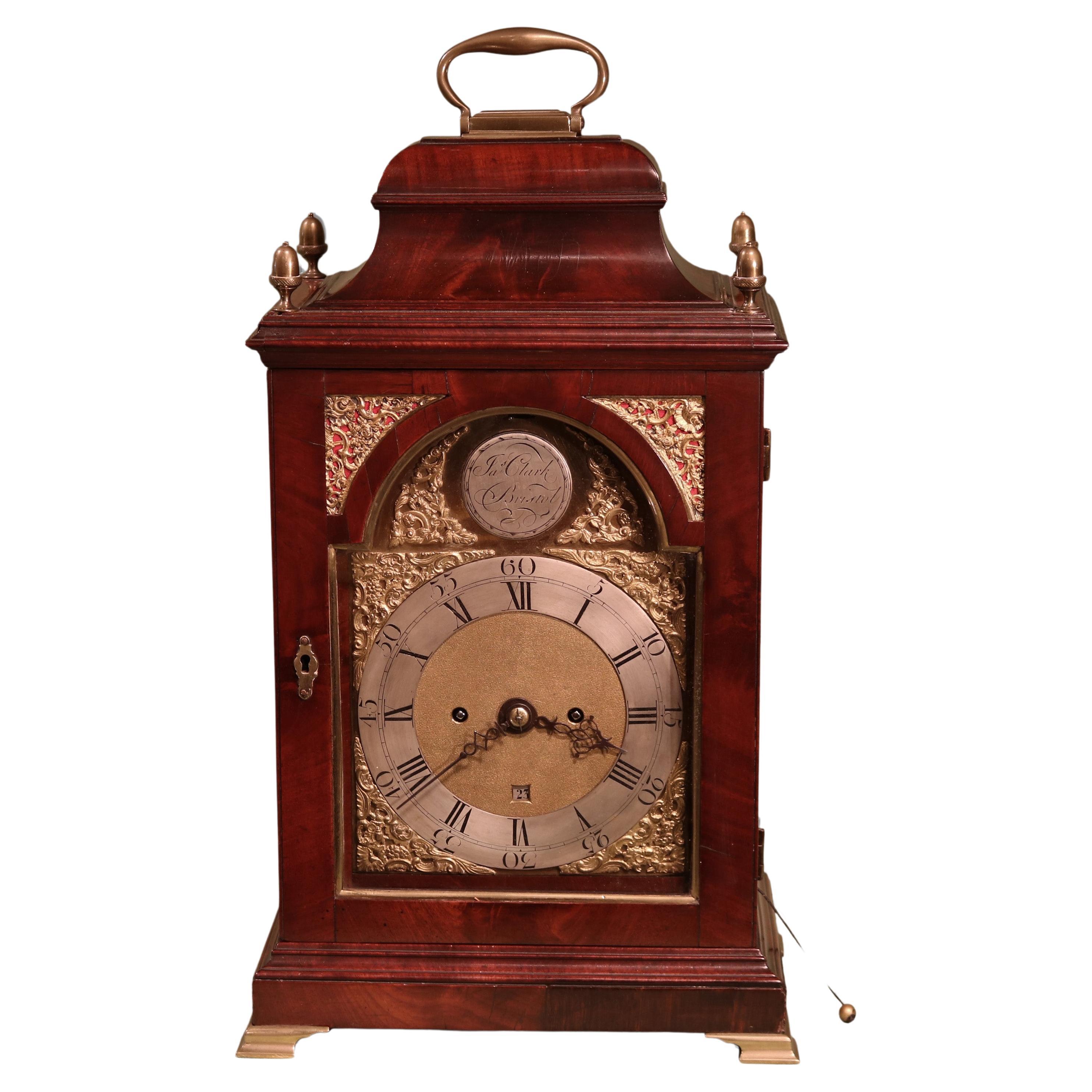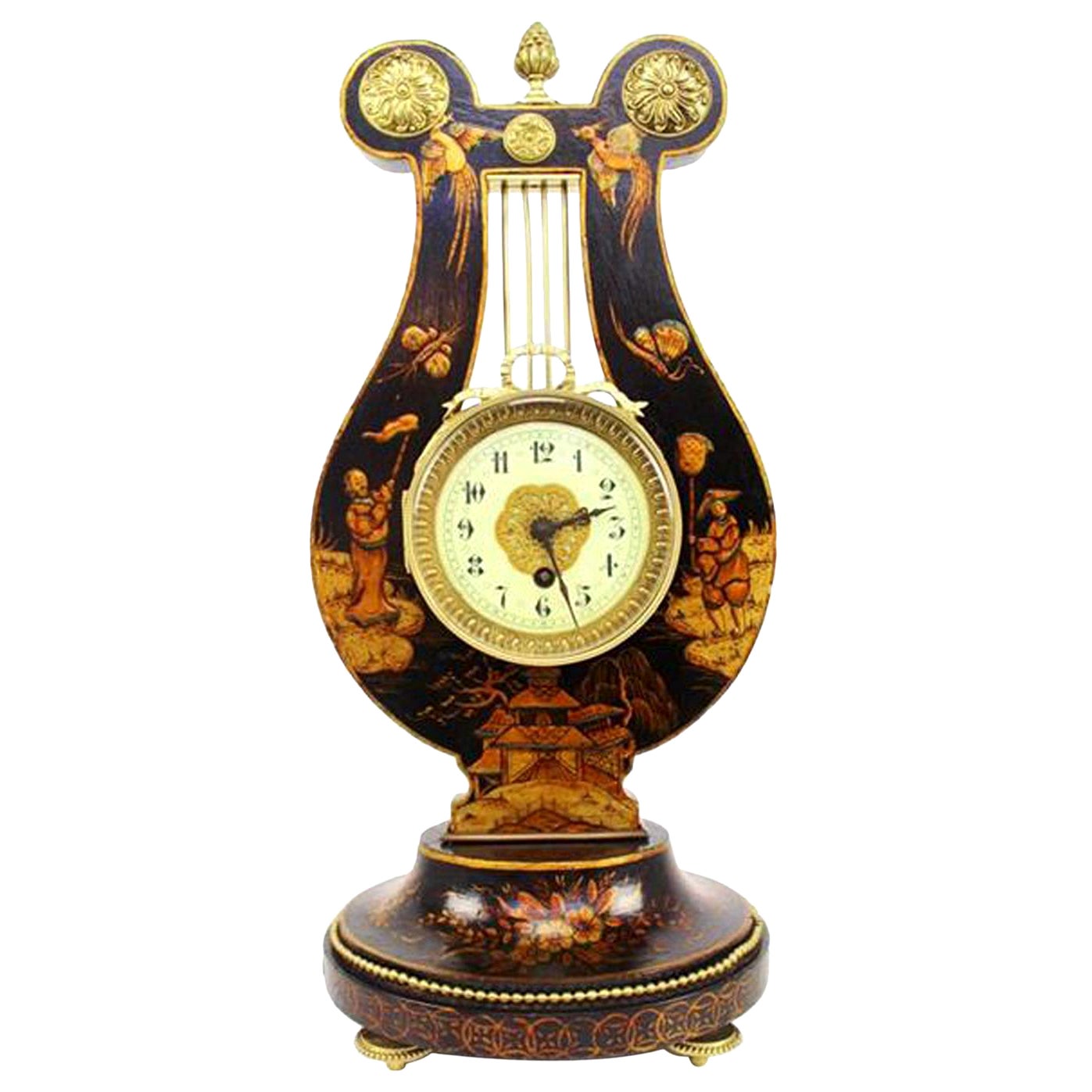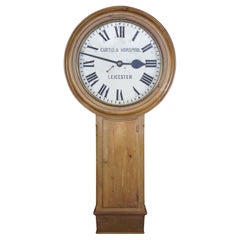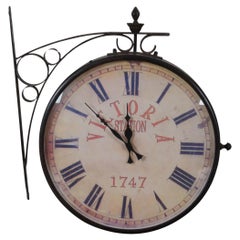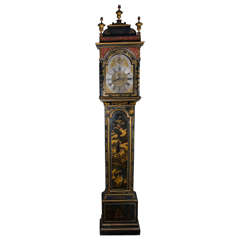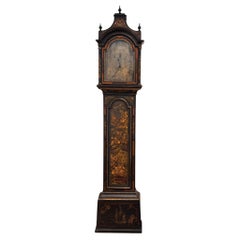
Vintage George III Style Chinoiserie Black Tavern Act of Parliament Wall Clock
View Similar Items
Want more images or videos?
Request additional images or videos from the seller
1 of 13
Vintage George III Style Chinoiserie Black Tavern Act of Parliament Wall Clock
About the Item
- Dimensions:Height: 37 in (93.98 cm)Width: 15.25 in (38.74 cm)Depth: 5 in (12.7 cm)
- Style:Chinoiserie (In the Style Of)
- Materials and Techniques:
- Period:
- Date of Manufacture:Late 20th Century
- Condition:Wear consistent with age and use. Good Condition with some paint loss to the case from age and use.
- Seller Location:Dayton, OH
- Reference Number:Seller: 354401stDibs: LU5343231397022
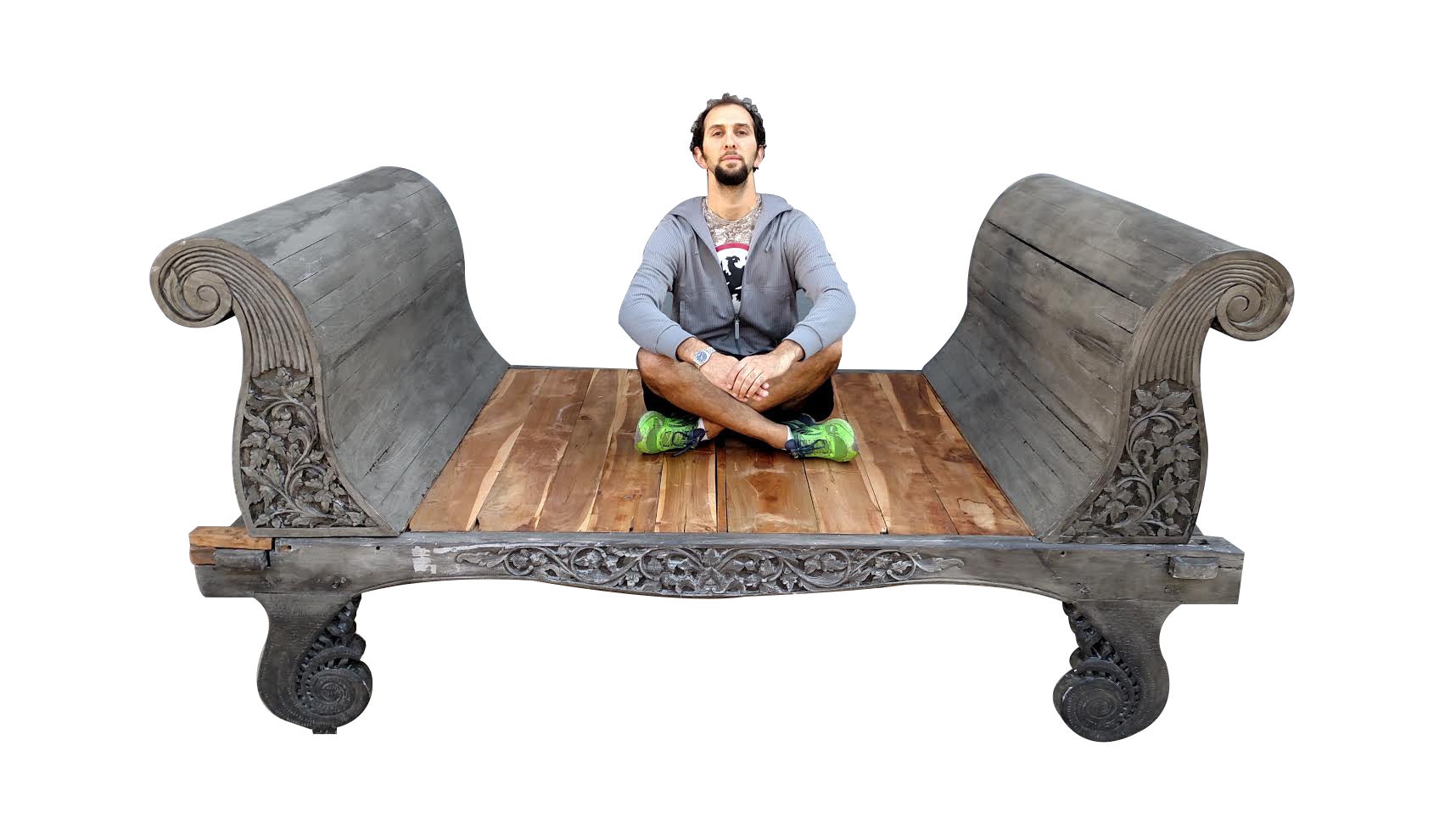
About the Seller
4.9
Platinum Seller
These expertly vetted sellers are 1stDibs' most experienced sellers and are rated highest by our customers.
Established in 2010
1stDibs seller since 2020
1,124 sales on 1stDibs
More From This SellerView All
- 18th C. English Pine Curtis & Horspool London Act of Parliament Tavern ClockLocated in Dayton, OH"18th century monumental museum quality Act of Parlament clock. Made from pine with a large round face over elongated case. Features an enameled metal face marked Curis Horspool in Leicester, London England. Curis was the royal watchmaker of the Prince of Wales. As a result of an Act passed by the English Parliament in 1797 tavern clocks were hung in every pub and tavern throughout the British Isles. The Act declared that a tax would be collected on every clock in the realm. As a result many private clock owners either hid their clocks or got rid of them altogether. Thus taverns and pubs became the preferred location for obtaining the correct time. The Tavern owners did not mind paying the tax because the towns people had to stop by if they wanted to find out what time it was. This resulted in more people eating and drinking at the Tavern. An ""Act of Parliament clock...Category
Antique 18th Century British Colonial Wall Clocks
MaterialsPine
$14,400 Sale Price20% Off - Vintage German Brass Ships Porthole Nautical Boat Wall Clock Mechanical MovementLocated in Dayton, OHMid 20th century key wound port hole clock. Features a brass frame with metal dial and glass window. Hangs via 3 screw holes at the base. Marked along the face EW A porthole, som...Category
Mid-20th Century Mid-Century Modern Wall Clocks
MaterialsBrass
$320 Sale Price20% Off - Vintage Victoria Station 1747 Double Sided Brass Wall Mount Railway Clock 18"Located in Dayton, OH2 Available - Late 20th century double sided railway clock styled after the famous clock at Victoria Station, London. Wrought metal wall mounted support and case in a dark bronze fin...Category
Late 20th Century Victorian Wall Clocks
MaterialsBrass
$208 Sale Price / item20% Off - Vintage Victoria Station 1747 Double Sided Brass Wall Mount Railway Clock 18"Located in Dayton, OHLate 20th century double sided railway clock styled after the famous clock at Victoria Station, London. Wrought metal wall mounted support and case in a dark bronze finish. 12 inch d...Category
Late 20th Century Victorian Wall Clocks
MaterialsMetal
$188 Sale Price20% Off - Vintage Victoria Station 1747 Double Sided Brass Wall Mount Railway Clock 14"Located in Dayton, OHLate 20th century double sided railway clock styled after the famous clock at Victoria Station, London. Wrought metal wall mounted support and case in a dark bronze finish. 10 inch d...Category
Late 20th Century Victorian Wall Clocks
MaterialsMetal
$152 Sale Price20% Off - Rare Self Winding Clock Co Naval Observatory Time Western Union Wall Clock 26"By Self Winding Clock Co.Located in Dayton, OHAntique Western Union, Naval Observatory Time, self winding clock. Features a tall wooden case with carved corners and pediment mounted with tin sign reading "Naval Observatory Time Hourly By Western Union. White metal face with black Roman numerals and hands. Interior of case labeled "Property of Self-Winging Clock Co New York" and serial number on metal tag as well as on works. F Style / Vibrator movement, Serial Number 92630 (likely manufactured before 1917). Patented Oct. 4, 1898 by the Self Winding Clock Company. Fitted with Archer AC Adapter. "The Self Winding Clock Company (SWCC) of New York began business in 1886 marketing their own electro-mechanical clocks based on the 1884 electro-mechanical clock patent of one of the company founders, Chester Pond (1844-1912). The innovative principle of this clock mechanism was the incorporation of a small electric winding motor that automatically rewound the mainspring after the clock ran for one hour. The clocks were powered by batteries. The batteries would last at least one year. By being automatically rewound each hour, the strain on the mechanism was kept to a minimum, resulting in a very accurate timepiece. At about the same time SWCC began selling clocks, Pond was developing an electro-mechanical synchronizer attached to the clock movement that could synchronize the clock hands to an accurate time source. The synchronization occurs when a remote, precisely timed, electrical impulse is sent via wires connected to the individual clocks. By 1887 the synchronizers had been so improved that the Self Winding Clock Company could not only market individual clocks but also sell entire synchronized clock systems. By the 1960’s the days of individual elegant mechanical timepieces and synchronized time systems were over. SWCC ceased operations in the late 1960’s. All company records and inventories were relegated to the trash pile. The STYLE “F”, or as commonly referred to, the VIBRATOR movement was developed by Frederick M. Schmidt in the late 1890’s. By 1898 the “F” movement was being installed in almost all SWCC clocks. The movement has a Graham dead beat escapement. The “F” movement incorporates both the time train and winding motor in one set of plates. The motor used a single pair of coils. It was more reliable and easier to service than the rotary movement. The mainspring is re-wound after running for one hour. The vibrating armature oscillates up and down carrying a winding lever with a pawl that turns the winding wheel. The “F” movement was used in individual clocks and in clocks that were part of synchronized systems. It was made in 60, 80,120 and 140 beat versions. There were virtually no changes to the movement in 60 plus years the movement was in production. Almost all Style “F” movements wound on 3 volts DC. Style “F” movement serial numbers started in the 33,000’s and the first movements were probably made in 1898. The earliest plates had patent dates of 1891, 1892 & 1898. Serial numbers with these patent dates go up to the 63,000’s and were made before 1908. By 1908 the plates only had the 1898 patent date. By using catalog images of movement serial numbers it can be concluded that movements with serial numbers up to 112,000 were made in or before 1917. Movements with serial numbers up to 196,000’s were made in or before 1929. The single patent date serial numbers go as high as 220,000’s. Then there appears to be a large numbering gap. Finally, movements appear with no patent dates and serial numbers with the prefix FR. These numbers start at 300,000 but only continue to about 302,000. Start again at 400,000 and continue to about 402,000. Based on the large serial number gaps, the total number of “F” movements manufactured is probably around 200,000. They were manufactured between 1898 and possibly as late as the 1950’s. SWCC both sold clocks to and partnered with their biggest customer, Western Union in a nationwide distribution of precisely accurate “Naval Observatory Time” clocks. These either 120 or 140 beat Naval Observatory clocks...Category
Early 20th Century Late Victorian Wall Clocks
MaterialsMetal
$1,360 Sale Price20% Off
You May Also Like
- 18th Century George II Tavern or Act of Parliament Clock, Circa 1740By Thomas MooreLocated in Oxfordshire, United KingdomTavern clock by Thomas Moore Ipswich A fine eighteenth-century tavern clock with a japanned shield dial and gilt decorations, signed at the bottom o...Category
Antique 18th Century English George II Wall Clocks
MaterialsOak, Pine
- George III Chinoiserie Japanned Longcase ClockBy William ScafeLocated in London, GBThe dial signed William Scafe, London, the arched hood with an elaborate caddy top surmounted by three carved giltwood flambeau pedestal urns above a gilt scroll pierced sound frieze...Category
Antique Mid-18th Century British George III Grandfather Clocks and Longc...
- 18th Century George III Chinoiserie ClockLocated in Charlottesville, VAChinoiserie clocks can make a room. Here is a handsome one.Category
Antique 18th Century British Grandfather Clocks and Longcase Clocks
MaterialsMetal
- English George III 18th Century Japanned Tall Case Clock with Chinoiserie DécorLocated in Atlanta, GAAn English George III period Chinoiserie parcel gilt and japanned tall case clock from the 18th century, with black paint and arched brass di...Category
Antique 18th Century English Chinoiserie Grandfather Clocks and Longcase...
MaterialsBrass
- Continental George III Carved and Gilt Wall ClockLocated in Bridgeport, CTThe elaborate carved and gilt surround with spread eagle crest on gnarled branches, and a leaf and berry support. The circular frame with twin slim horns filled with fruit on the sides, covered with leaves and ending in a bow terminal. The inner surround with an openwork guilloche band for the painted dial with glass cover and outer mounted black metal hands. Working order unknown and lacking a key. H. 27", W. 22", Depth 17" Condition: Please see all detail photos. There is a stable age crack to one eagle wing...Category
Antique Early 19th Century Georgian Wall Clocks
MaterialsEnamel
- George III Mahogany Regulator ClockLocated in Bradford-on-Avon, WiltshireA Regulator clock by William Chisholm, London. Baillie has no record of the maker but by the design of its original case, we believe it to be late 18th century circa 1790. The 8 day ...Category
Antique 1790s English George III Grandfather Clocks and Longcase Clocks
MaterialsMahogany
Recently Viewed
View AllMore Ways To Browse
Round Face
Gold Chinoiserie
Battery Powered
George Iii Painted
Black Chinoiserie Paint
Decorative Wall Round
Black Gold Chinoiserie
Black And Gold Chinoiserie
Tavern Furniture
Wall Object Round
Vintage Clock Roman Numerals
Pagoda Wall
Roman Black Clocks
Chinoiserie Round
Hand Painted Decorative Wall Panels
Round Wall Panel
Roman Numeral Wall Clock
Black Retro Wall Clock

